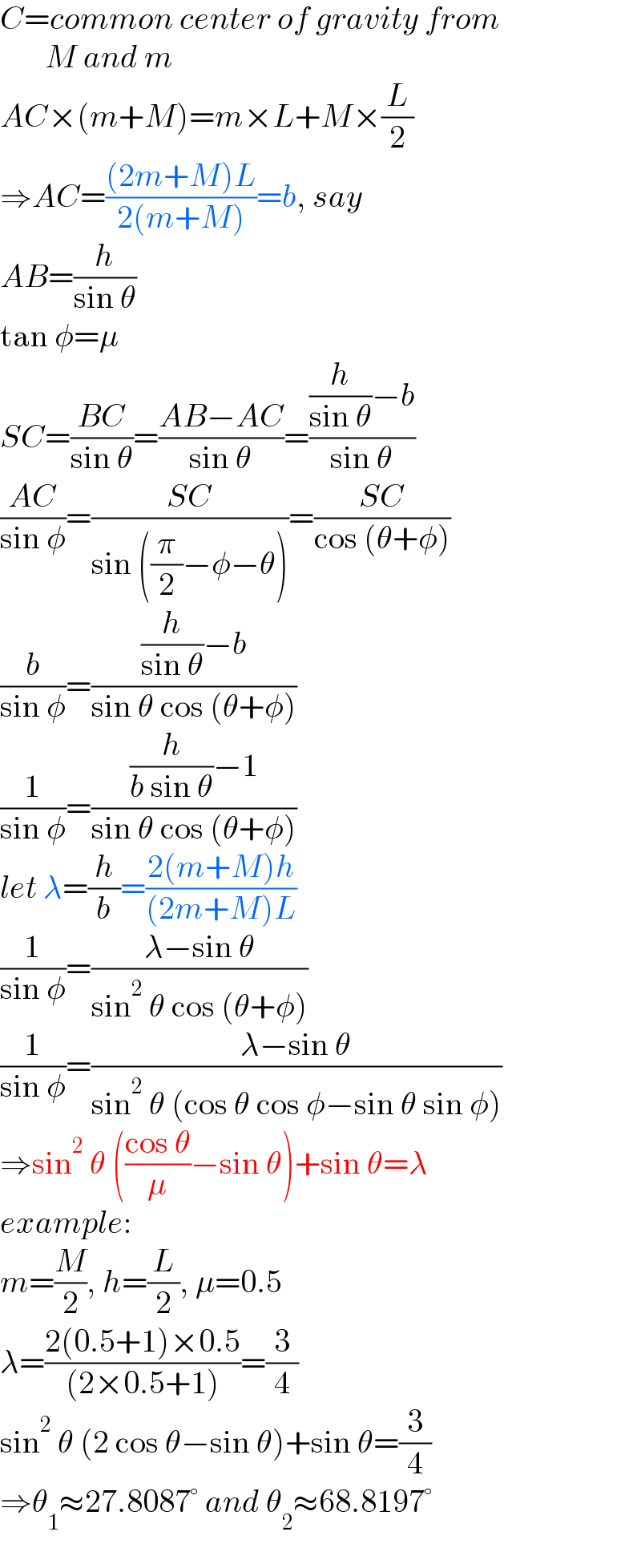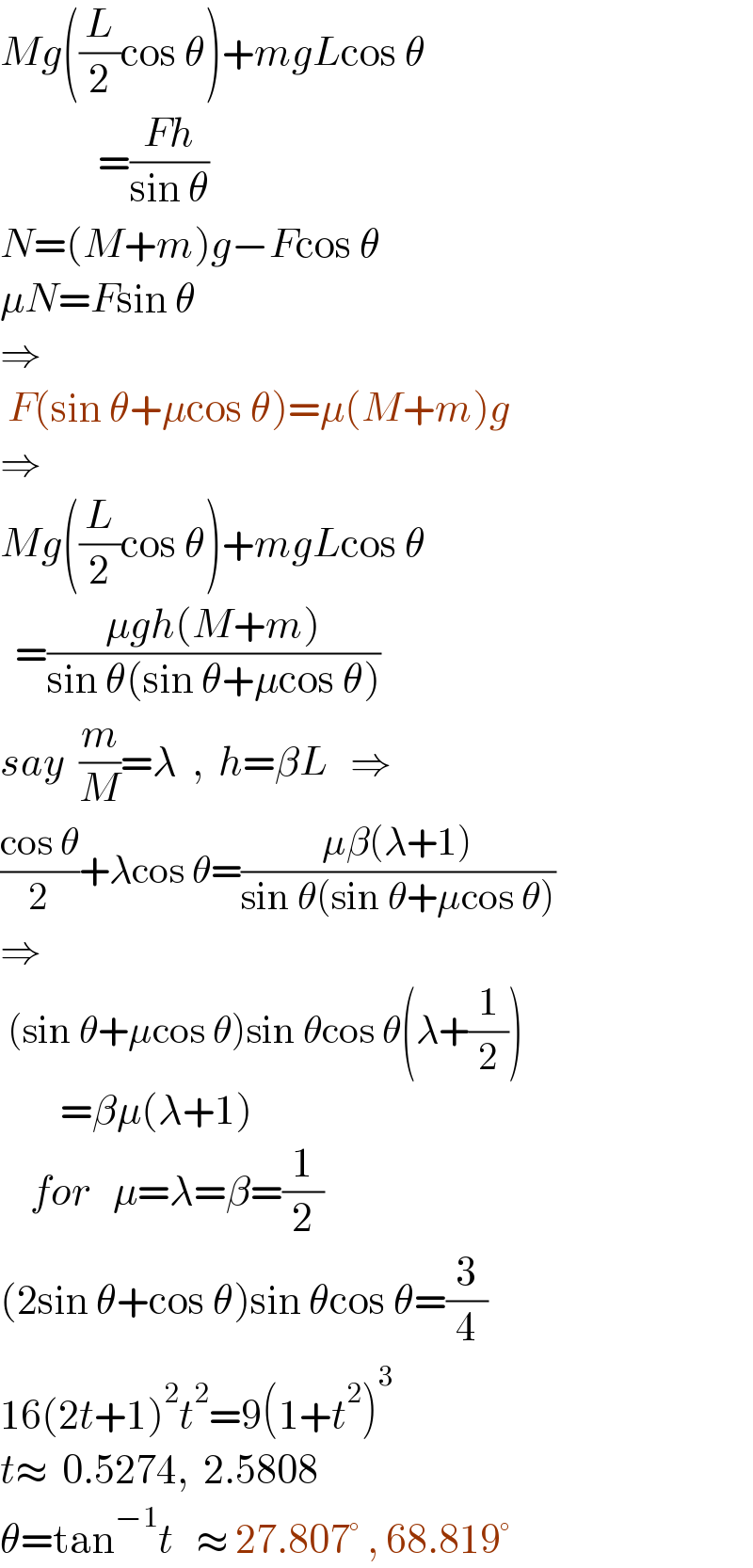
Question and Answers Forum
Question Number 169458 by ajfour last updated on 30/Apr/22

Commented by ajfour last updated on 30/Apr/22

Answered by mr W last updated on 01/May/22

Commented by mr W last updated on 04/May/22

Commented by BHOOPENDRA last updated on 01/May/22

Commented by ajfour last updated on 04/May/22

Commented by mr W last updated on 04/May/22

Commented by mr W last updated on 04/May/22

Answered by ajfour last updated on 02/May/22

Commented by mr W last updated on 03/May/22

Commented by ajfour last updated on 03/May/22

